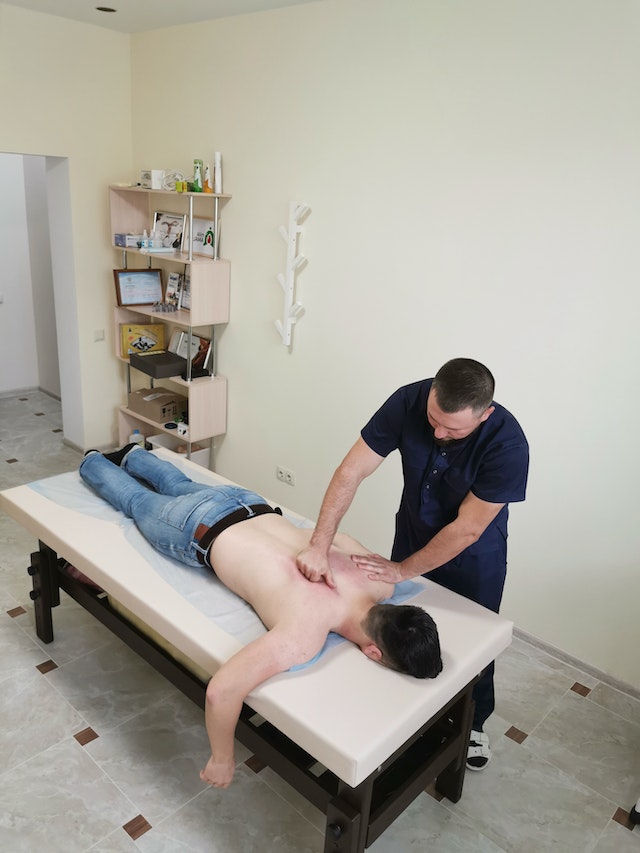Are you passionate about helping people recover from injuries and regain their mobility? If so, a career as a physical therapist might be the perfect fit for you. Physical therapists play a vital role in assisting patients of all ages and backgrounds in their journey to wellness. But did you know that their expertise extends beyond hospitals and clinics?
In this article, we will explore the diverse opportunities available for physical therapists, from traditional hospital settings to sports clinics and beyond. Whether you aspire to work in a bustling emergency room or prefer the fast-paced environment of a sports rehabilitation center, the field of physical therapy offers a range of options to suit your interests and aspirations.
Not only will we delve into the various work settings, but we will also discuss the specialized areas within physical therapy, such as pediatrics, geriatrics, orthopedics, and neurology. By gaining insight into these unique specialties, you can discover which path aligns best with your professional goals.
Join us as we uncover the many exciting opportunities that await physical therapists in different healthcare settings. Get ready to embark on a rewarding career where you can truly make a difference in the lives of others.
Overview of the Role of Physical Therapists
Physical therapists are healthcare professionals who specialize in the evaluation, diagnosis, and treatment of individuals with physical limitations due to injury, illness, or disability. They use various techniques and modalities to help patients restore function, reduce pain, and improve mobility. Physical therapy is a dynamic field that encompasses a wide range of settings and specialties.
Career Opportunities for Physical Therapists On The Rise
In recent years, the demand for physical therapists has been steadily increasing. As the population ages and more people seek non-surgical solutions for their physical ailments, the need for skilled physical therapists has become more pronounced. According to the Bureau of Labor Statistics, employment for physical therapists is projected to grow by 18% from 2019 to 2029, much faster than the average for all occupations.
Opportunities in Hospitals and Rehabilitation Centers
Hospitals and rehabilitation centers are the traditional settings where physical therapists are most commonly found. In these environments, physical therapists work closely with medical professionals to provide comprehensive care to patients recovering from surgeries, accidents, or illnesses. They play a crucial role in helping patients regain their independence and mobility, whether it's through therapeutic exercises, manual therapy techniques, or the use of assistive devices.

Physical therapists who work in hospitals often collaborate with other healthcare providers, such as physicians, nurses, and occupational therapists, to develop and implement personalized treatment plans. They may work in various departments, including orthopedics, neurology, cardiology, and pulmonary rehabilitation. The fast-paced nature of hospital settings allows PTs to gain valuable experience and exposure to a wide range of conditions and patient populations.
Exploring Physical Therapy in Sports Clinics and Athletic Training Facilities
If you have a passion for sports and athletic performance, a career in sports physical therapy might be your calling. Sports clinics and athletic training facilities provide physical therapists with an exciting opportunity to work with athletes of all levels, from amateurs to professionals. In these settings, physical therapists focus on preventing and treating sports-related injuries, improving athletic performance, and facilitating safe and effective rehabilitation.

Sports physical therapists employ specialized techniques such as sports massage, joint mobilization, and functional training to help athletes recover from injuries and enhance their overall performance. They may also work closely with strength and conditioning coaches, athletic trainers, and sports medicine physicians to develop comprehensive treatment plans tailored to each athlete's specific needs.
Physical Therapy in Home Healthcare and Hospice Settings
While many physical therapists work in clinical settings, others choose to provide care in patients' homes or hospice settings. Home healthcare allows physical therapists to deliver personalized treatment in the comfort and convenience of patients' own residences. This setting is particularly beneficial for individuals who have difficulty traveling or require ongoing care due to chronic conditions or disabilities.
In home healthcare, physical therapists assess patients' functional abilities, develop customized treatment plans, and provide education and support to patients and their caregivers. They work with patients to improve their mobility and range of motion, manage pain, and maintain independence in their daily activities. Physical therapists working in hospice settings focus on providing comfort and palliative care to individuals with terminal illnesses, helping them maintain the highest possible quality of life during their end-of-life journey.
Opportunities in Schools and Educational Institutions
Physical therapy is not limited to healthcare facilities; it also plays a crucial role in educational settings. Physical therapists working in schools help children with disabilities or injuries optimize their physical functioning and participate fully in school activities. They collaborate with teachers, parents, and other professionals to develop individualized education plans and implement strategies to improve students' motor skills, coordination, and overall physical well-being.
In addition to providing direct therapy services, school-based physical therapists may also contribute to the development of school-wide policies and programs that promote health and wellness. They may conduct screenings, provide education on injury prevention and ergonomics, and advocate for inclusive physical education programs that benefit all students.

Occupational Therapy and Physical Therapy Collaboration
Physical therapy and occupational therapy are two closely related professions that often work hand in hand to provide comprehensive care to individuals with physical limitations. While physical therapists focus on improving movement and physical function, occupational therapists concentrate on enhancing patients' ability to perform activities of daily living, such as dressing, bathing, and cooking.
The collaboration between physical therapists and occupational therapists is particularly valuable in rehabilitation centers, where patients may require both types of therapy simultaneously. By working together, these professionals can ensure that patients receive holistic and coordinated care that addresses their physical, functional, and psychosocial needs.
Specialized Areas of Physical Therapy Practice
Physical therapy offers a wide range of specialized areas that allow therapists to focus on specific patient populations or conditions. Some therapists choose to specialize in pediatrics, working with infants, children, and adolescents to address developmental delays, congenital conditions, or injuries. Pediatric physical therapists use play-based interventions and creative techniques to engage their young patients and facilitate optimal growth and development.
Geriatric physical therapists, on the other hand, specialize in working with older adults, addressing age-related conditions such as arthritis, osteoporosis, and balance disorders. They help seniors maintain their independence, prevent falls, and improve their overall quality of life. Orthopedic physical therapists focus on the musculoskeletal system, treating conditions such as fractures, joint replacements, and sports injuries through targeted exercises, manual therapy, and patient education.

Continuing Education and Advancement Opportunities for Physical Therapists
To stay current in their field and provide the best possible care to their patients, physical therapists must engage in ongoing professional development. Continuing education courses, workshops, and conferences offer opportunities for therapists to expand their knowledge and skills in specialized areas, stay abreast of the latest research and advancements, and network with fellow professionals.
Additionally, physical therapists can pursue advanced certifications and specialization programs that enhance their expertise in specific areas, such as orthopedics, neurology, or sports physical therapy. By investing in their professional growth, physical therapists can not only broaden their career opportunities but also provide the highest standard of care to their patients.
Why You Should Consider a Career As a Physical Therapist
From hospitals to sports clinics, home healthcare to educational institutions, physical therapists have a multitude of opportunities to make a meaningful impact on the lives of others. Whether you're passionate about helping athletes recover from injuries, assisting children with special needs, or providing care to older adults, the field of physical therapy offers a diverse range of settings and specialties to suit your interests and aspirations.
As the demand for physical therapists continues to grow, this rewarding profession provides a wealth of possibilities for those looking to combine their passion for healthcare with their desire to improve the physical well-being of others. So, if you're ready to embark on a career that allows you to make a real difference in people's lives, consider becoming a physical therapist and uncover the many exciting opportunities that await you.
Physical Therapy Career FAQs:
Q: What are the different career options in physical therapy?
A: There are several career options in the field of physical therapy, including becoming a physical therapist, a physical therapist assistant, or a physical therapy aide.
Q: What is the career path for a physical therapist?
A: The career path for a physical therapist typically involves earning a bachelor's degree in a related field, completing a Doctor of Physical Therapy (DPT) program, passing the licensure exam, and gaining practical experience through internships or residencies.
Q: What is the American Physical Therapy Association (APTA)?
A: The American Physical Therapy Association (APTA) is a professional organization that represents physical therapists, physical therapist assistants, and physical therapist students. It promotes the profession of physical therapy and advocates for the rights of its members.
Q: What is the average salary of a physical therapist?
A: The average salary of a physical therapist varies depending on factors such as experience, location, and specialization. According to Salary.com the typical salary for a PT in the United States ranges from $91,201 to $106,501 as of September 2023, with the median salary being $98,601.
Q: What are the different types of physical therapy?
A: There are several types of physical therapy, including cardiovascular and pulmonary physical therapy, clinical electrophysiology, and women's health physical therapy. These specialties focus on specific areas of practice and require additional education and training.
Q: How can I advance my career in physical therapy?
A: There are various ways to advance your career in physical therapy, such as pursuing advanced certifications or specializations, gaining clinical experience in different settings, participating in continuing education courses, and getting involved in professional organizations like the APTA.
Q: What is the Commission on Accreditation in Physical Therapy Education?
A: The Commission on Accreditation in Physical Therapy Education (CAPTE) is an accrediting agency that ensures the quality of physical therapy education programs. Graduating from a CAPTE-accredited program is a requirement for obtaining licensure in most states.
Q: What is the difference between a physical therapist and a physical therapist assistant?
A: A physical therapist is a licensed healthcare professional who evaluates, diagnoses, and treats patients with physical impairments or disabilities. A physical therapist assistant works under the supervision of a physical therapist and helps implement treatment plans.
Q: What is hands-on therapy?
A: Hands-on therapy, also known as manual therapy, involves the use of the physical therapist's hands to diagnose and treat musculoskeletal conditions. This may include techniques such as joint mobilization, soft tissue mobilization, and manual stretching.